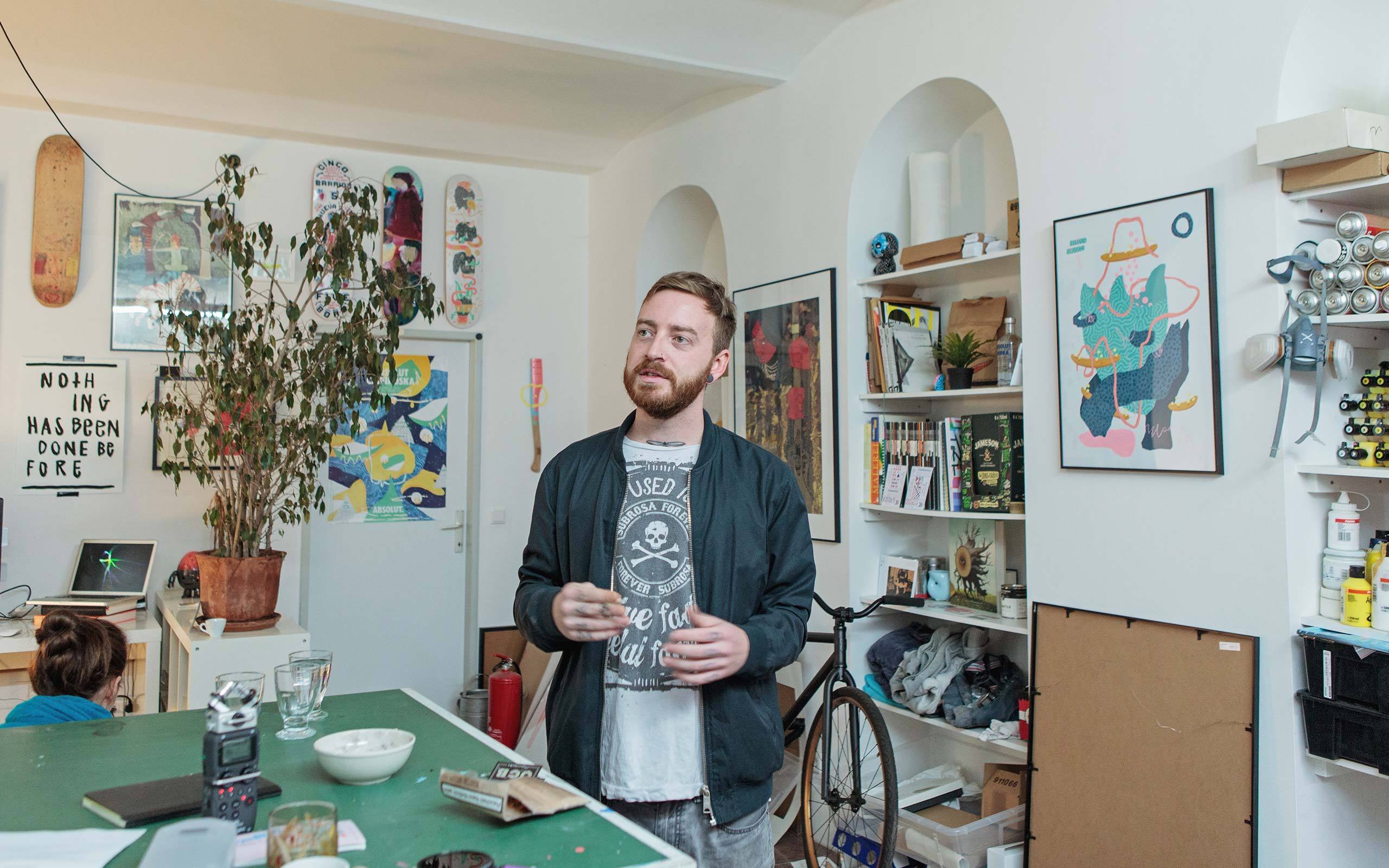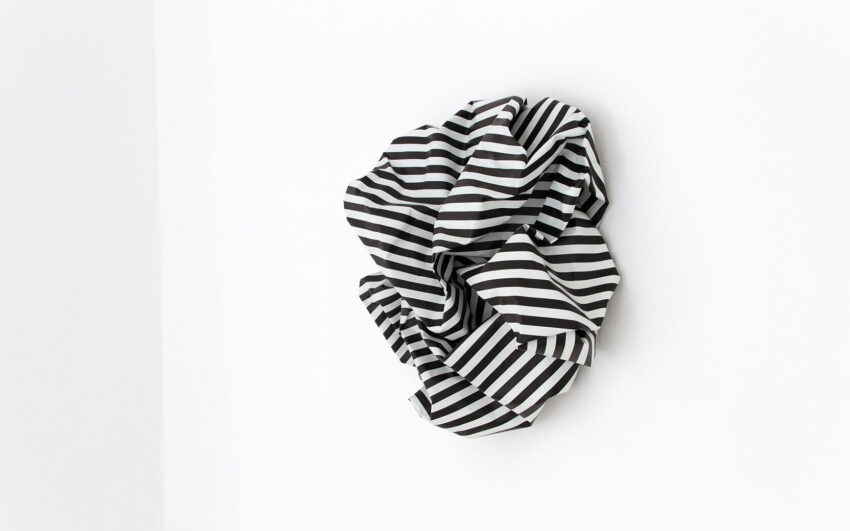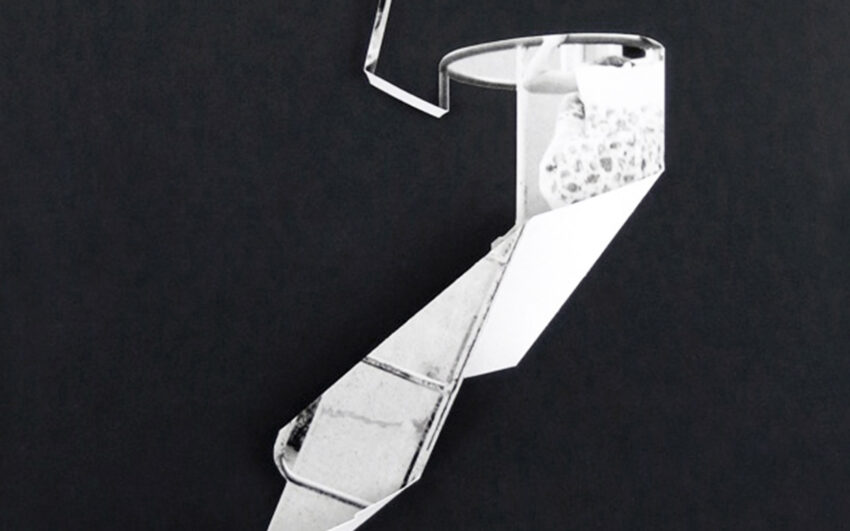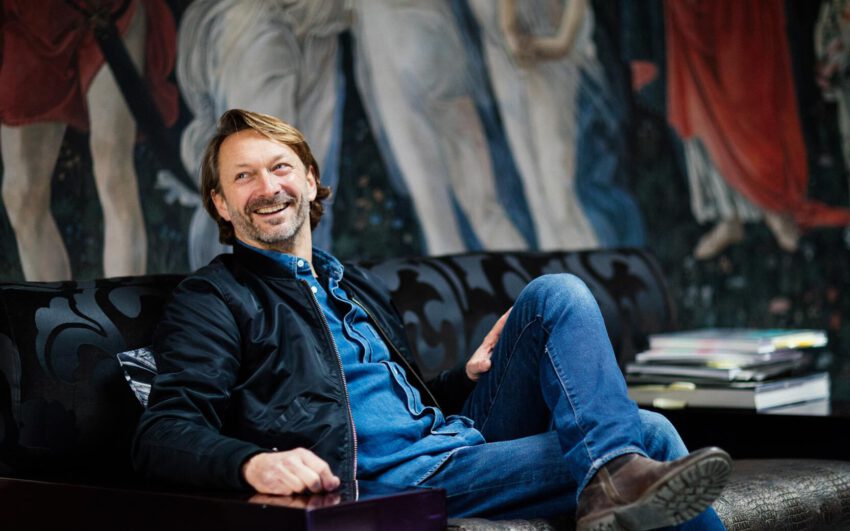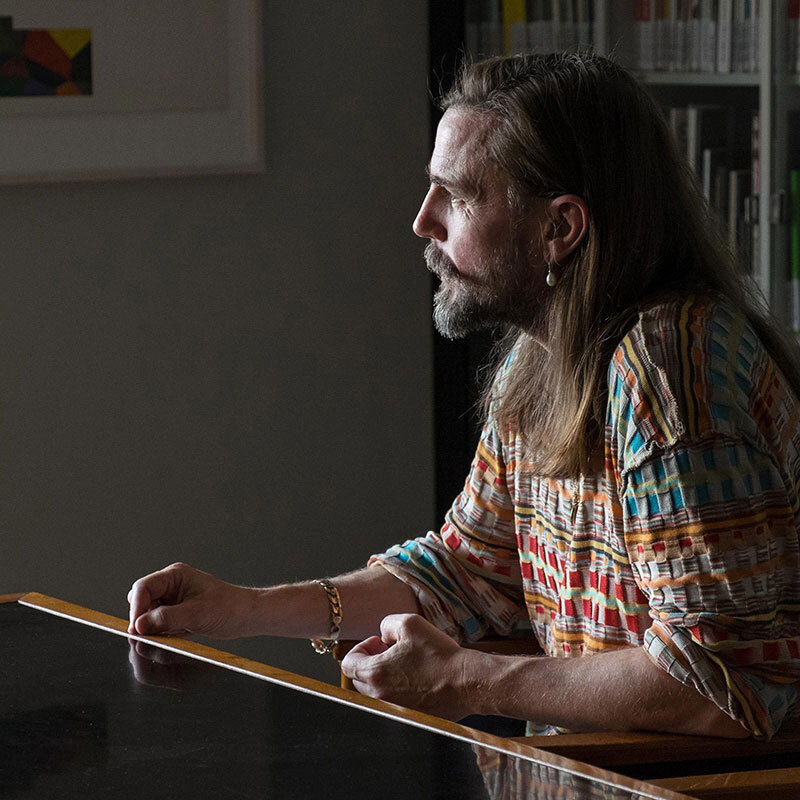Austrian-born artist Boicut combines impulsive lines and abstract shapes, which he paints in his signature colour palette of pastel hues, as a reference to the good things in life. It matches his own positive and easy-going attitude to life, and to his career as an artist. One might say he comes from Street Art, but he has got his problems with this term. He is not a fan of putting things boxes. What he is a fan of, however, is coffee and cigarettes. Boicut appreciates the collaborative culture of Vienna’s artist scene and wouldn’t want to change it for another place – at least not for now. We met Boicut in his studio and talked with him, among others, about a busy last year, his calling to the States to work in Miami, and how he got into art in the first place.
Boicut, following you on Facebook and Instagram one can tell you are travelling quite a bit.
Last year was quite busy, that’s true. It has been a great time for me though. In February I spent a month in Miami. I was invited to Art Wynwood and they used one of my works for invitations, VIP passes and booklets. They gave me a studio of my own on the premises oft he fair, where I was working during one week. Afterwards, in May, I was in New York visiting friends. I just love the city. After that, a collector of my work invited me back to Miami to work there. It has been exhausting but as I said it has truly been a great time for me.
You also entered into an artistic collaboration during last year.
Yes, in September I spent the time in Belgrad, together with Peter Phobia. We have known each other for a couple of years, from clubbing. At some point we got to talk, as I always liked his work. It became clear for us pretty soon, that we would some time work together on something. We then did the mural art painting for Absolut at the Sneak-In in Vienna. Our styles complement each other. Peter’s work is more illustrative, with his signature Mickey Mouse-eared storm hoods, whereas I apply my abstract surface areas and patterns.
How did it all start for you with doing art?
Is all started pretty late. It’s true that I always loved drawing. But at some point there where other things which seemed more important. The first girlfriend, skating, and so on. So I kind of lost sight of drawing. I later got trained to be an electrical engineer. It was very important to my parents. After completing high-school I settled in Vienna looking for something to do which had nothing to do with technology, so I started to take psychology classes. In addition I was working in a call centre for 4 years. At that moment it all seemed right to me.
"It was the final year at university, in the master’s class. My chosen topic was 'the artist as a brand'. By choosing a name and a logo I gave birth to ’Boicut’."
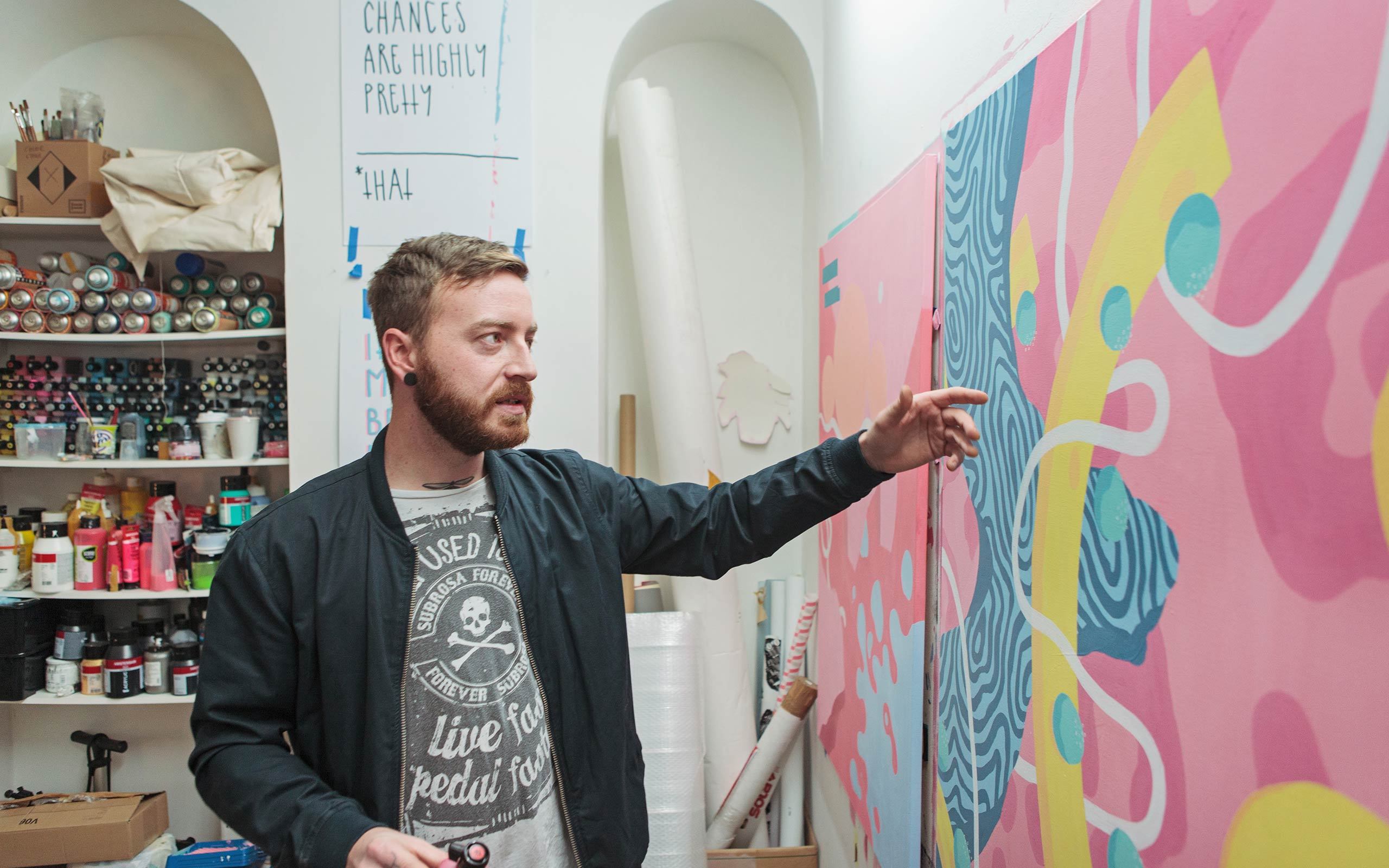
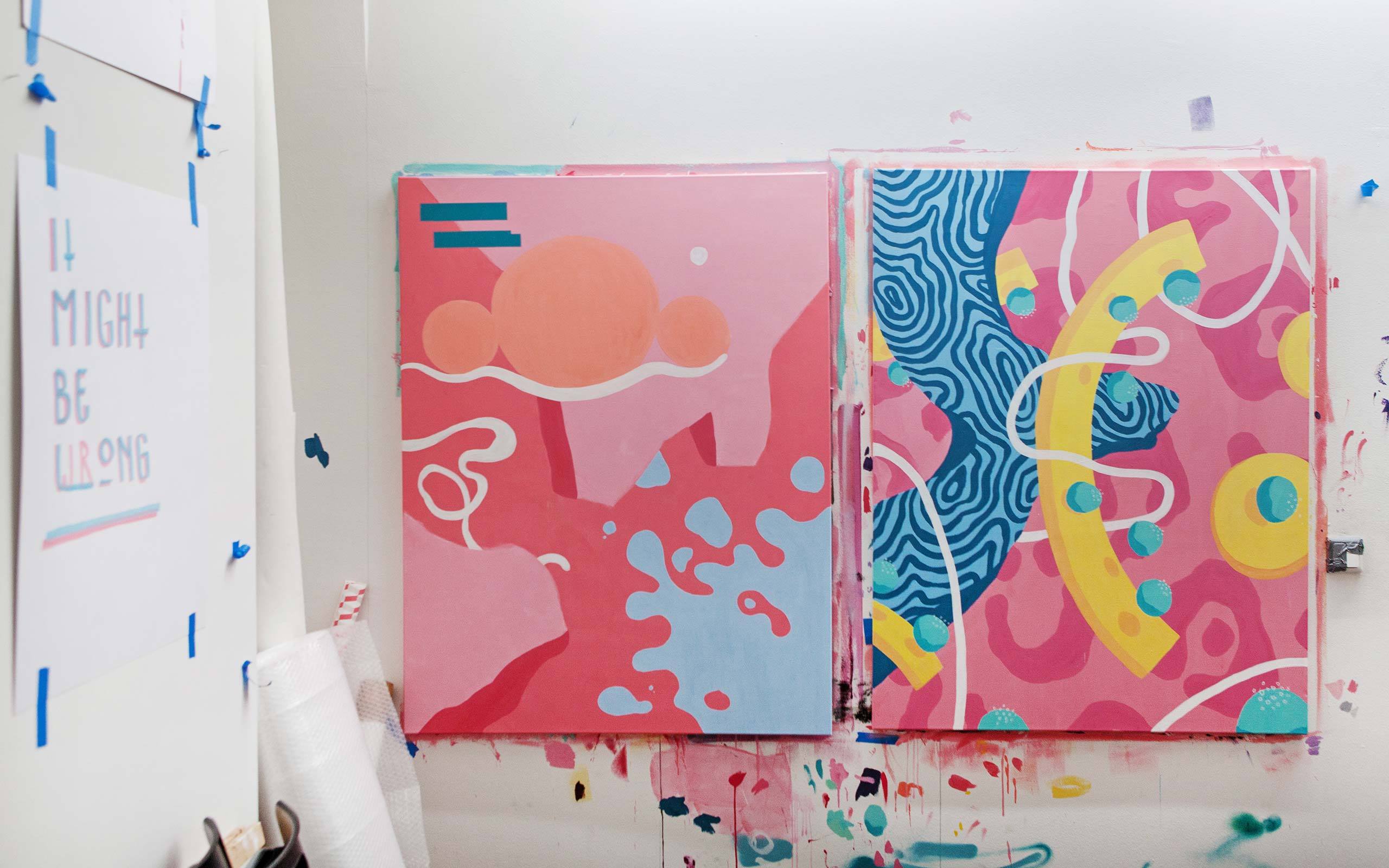
Boicut is your pseudonym. How did you arrive with it?
It was the final year at university, in the master’s class. My chosen topic was 'the artist as a brand'. By choosing a name and a logo I gave birth to Boicut.
Why did you not chose your real name?
It’s derived from the Street Art culture. I wasn’t involved such a great deal, but I could also be found at night. I did lots of wall pasting and sought lots of inspiration from the scene. Many of my friends did the same thing, and everyone had his own name. I don’t care too much for my regular name. I think there is always something difficult attached to one’s proper name. When I was about 16 I called myself 'tankboy', because I was in love with a 'tankgirl'. At some point that didn’t fit to me any longer, but I knew I wanted something with 'boy' in it. At that moment I friend had come to visit, and together we brainstormed about a suitable name. It was a Stanley knife on my desk, with which I had cut out many stencils, which inspired us to think of Boicut. Boicut just felt right to me.
And then you were ready to get on with art?
I was actually ready to go, yes. But after a few months I found myself again designing labels for wines. And I had to put up with the insults of some random wine grower from Burgenland, because the logo didn’t appeal to them. That was after completing my studies. I didn’t have any money yet and I had to accept as jobs what ever turned out. Luckily the director of an agency gave me a call. He wanted me to work for him as a graphic designer. He knew about Boicut, which of course was great, as I was able to pursue my own work on the side. It all went really well for while, until at some point it became clear that both things were no longer compatible. So I made plans to put in my notice, which I did. Since that point I have always kept doing just my own stuff. It was something my parents not always had an easy time with. I wanted to try out everything, as I did not want to be in a later position to blame myself for not having tried something.
What was your first job where you could be a master of your own?
My first bigger job of my own was for Steffl, the major department store in Vienna’s first district. I didn’t have my own studio so I worked in my living room. It was not so easy as I had to produce panels for their store windows, which measured 4 meters in height. That was the beginning of me being self-employed, and one thing kind of led to another thing. Since then I am just doing what I want – it’s a dream. I am really appreciative of this.
How did it go on then with art?
I soon had my first solo exhibition at Inoperable Gallery. Shortly after that, I became aware of an exhibition called Cash, Cans & Candy at Galerie Hilger. I got in touch with the gallery and asked them plainly, whether they would not be interested in showing one of my works as part of the exhibition. They came the same afternoon to pick up the first pieces. In Miami I then got better acquainted with Katrin Sophie Dworczak of Hilger Next. Together with the guys from 'Perfekt World', I travelled to Art Basel Miami 2013 – until now it has been one of the most inspiring journeys from an artistic perspective.
Is it important to be represented by a gallery?
Absolutely. I would not have been able to go to Miami hadn’t it been for my gallery. A true friendship has developed from this encounter. I was incredibly lucky to meet my gallery, and Kati in particular.
What role does Vienna play in your career as an artist?
I am really fond of Vienna, and to my mind it is still underrated. In the past everyone wanted to go to Berlin. But I feel this hype has ended long ago. Vienna has just the right size. Especially among the art and creative scene many local collaborations take place. Collaboration is more valued than competition here. I don’t know this attitude form other places. For a while I had thought of moving to the USA. As you know, last year I have been to the States quite a bit. But have a daily life there feels quite different from one’s original perception. Vienna will remain my home base for the foreseeable future.
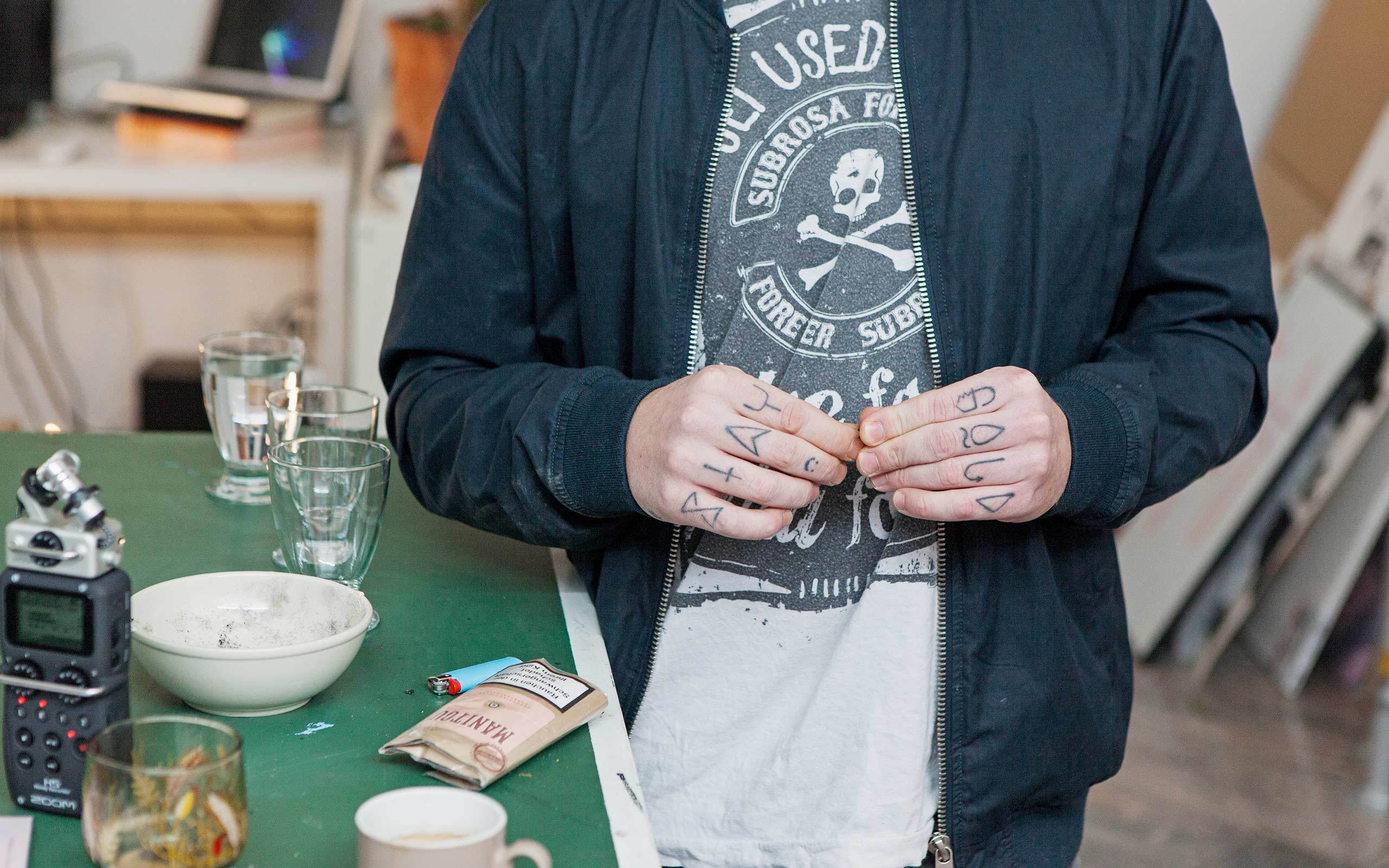
How would you explain your job to someone who does not know you?
By and large I paint. It doesn’t matter whether digital or analogue. I do my own things but also work together with brands. Even though my work touches the borders of applied art I do not consider myself a designer but an artist. The most important thing to me, when I do work, is freedom! I don’t want refinement rounds anymore!
Still you accept commissioned work.
Yes, but in such collaborations it is important for me that I am given free reign. In the work for Absolut, which I did with Peter Phobia at the Sneak-In, the idea came up at some point to include the distinctive shape of the vodka bottle. But no one interfered with our work. We had nobody say: "could you put this a little larger or smaller", or something like that. It’s important to me that both sides are happy, and the collaboration with Absolut was a mutually appreciative partnership
Street Art can only more recently be found in galleries.
I do have my problems with the term Street Art. I believe it’s not just me. As the name suggests, Street Art can be found in the streets. If a Street Artist can be found in a gallery this has nothing to do anymore with Street Art in my opinion. I am not a friend of thinking in 'boxes'. For me it is simply art!
You already have collectors of your work. Nuriel Molcho for example has set the foundation for his collection, based on a small piece from you. Do you know who buys your work?
You ask how it feels to have people who collect my work. This reminds me of the time, not long ago, during which I worked as a graphic designer. I cannot deny it is an awesome feeling if someone flies you in to do work for that person. It is truly amazing and I love the job I am doing. Actually don’t look at it so much as a job in the classic sense.
You did a big sculpture for Art Miami. So you do already enter the three-dimensional space.
Yes, that has been quite a challenge, because it was all rather short-term. It was my largest project so far. The planning and organisation involved was enormous. The letters 'Stay Gold' were produced in Miami. During the time of the art fair in Miami the prices are going up in the whole city – for everything really. We could eventually find a producer who was willing to build the sculpture for us. In a foreign city it is not that easy to find the right people to talk to, and the right locations. In Vienna I know exactly from whom to order the material I need for my work. In Miami that was quite different. The sculpture was built from a kind of styrofoam, covered with multiple layers of epoxy resin.
You went through quite something to finish that sculpture.
Yes, Peter and I arrived on a Friday evening and had to deliver the painted work in its final form for the fair. Add to this tight schedule almost incessant rain. We had to wait for a short period during which it wouldn’t rain to drive with the work to the fair in a pick-up truck. There really where a thousand stumbling blocks to overcome. As always everything worked out just fine in the end. Without Peter Phobia, however, I would not have been able to finish the sculpture in such a short period of time.
Do these three-dimensional works have a firm place in your practice?
Principally speaking I am making lots of objects. Unfortunately I am not always doing a great job documenting them, because I am often lacking the right equipment and time when I am travelling. In my first solo exhibition at Inoperable Gallery I even showed objects exclusively – including a water boiler, a table tennis bat, a spray can and a skateboard.
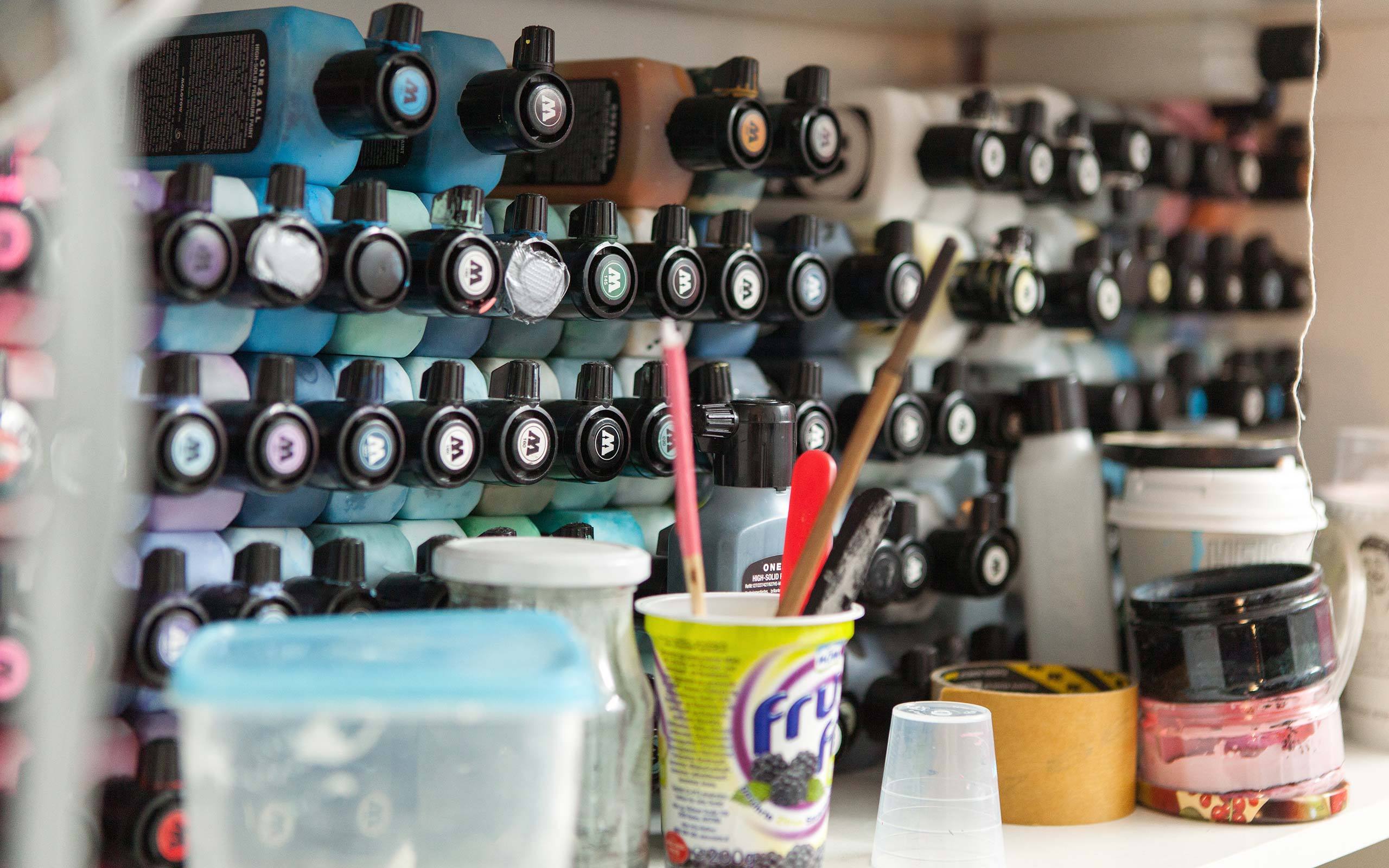
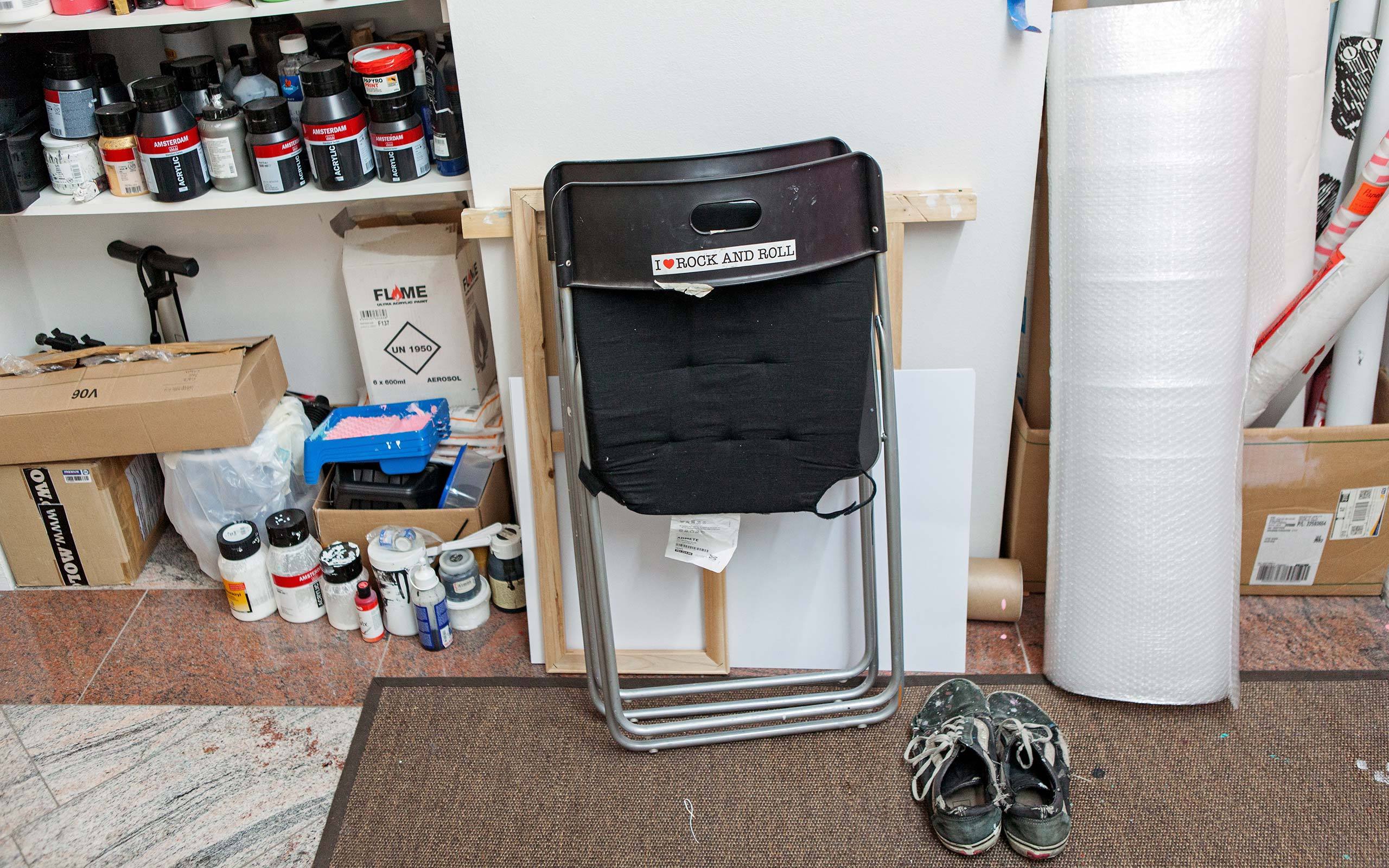
The pastel colours in rose, light-blue and turquoise have become a trademark of yours. What kind of colour paint do you use?
They are highly pigmented paints on an acrylic basis, which dries really fast. I am using it for every application, for canvas as well as sculptures and objects. As the paint is resistant to light, my work maintains the brilliance of the colours as they were applied. I really like these colours for their high opacity.
What’s the first step you usually take when starting with a new piece of work?
For works on canvas I often start with some digital sketches, which I then transfer on to the canvas. Then I start painting, where ever it takes me, really. But sometimes things just work out by themselves. I simply start with one surface area, which then leads to the next one, until it’s finished. I don’t think that I am following a typical pre-determined workflow.
What are you working on right now?
I am just about to start on a commissioned work. A large canvas measuring 230 x 120 for which I am going to start today on some digital sketches.
Are you working in your studio every day?
At the moment we are in work mode that we work through the night, often into the morning hours. I always have this urge to do things. When I am in Vienna, I am in here every day working.
What would you be doing if you were not creating art?
You mean what would have been my Plan B? If I hadn’t passed the entrance exams, I would have become a tattoo artist. That has always been on my mind. If I can find the time I would love to learn how to tattoo
What will be next for Boicut?
Art Wynwood is taking place again in Miami this February, in which I will participate. Step by step, there will be more international exhibitions. I am going with the flow and see what happens. Of course I have my goals, but I want to take things easy. If one isn’t overly ambitious and is patient enough, one thing will lead to the next. Principally speaking, I believe in the fact that everything is possible.
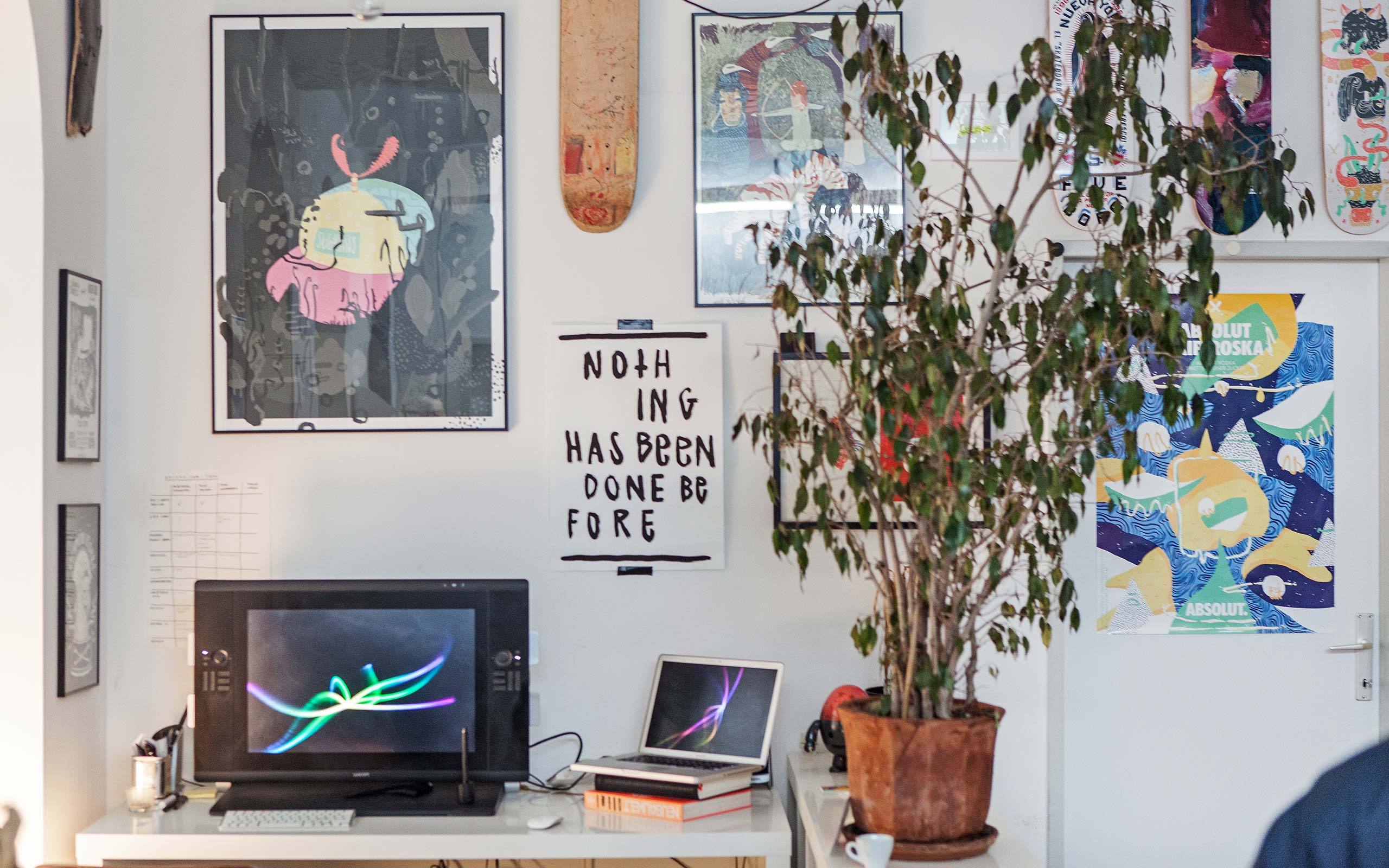
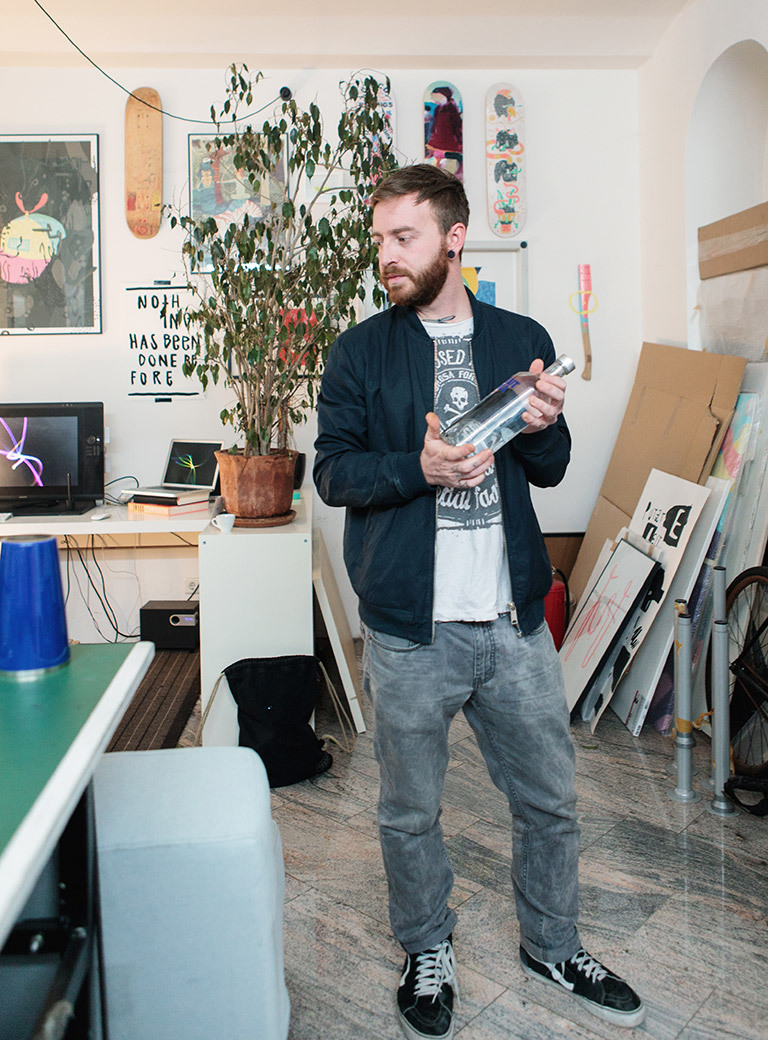
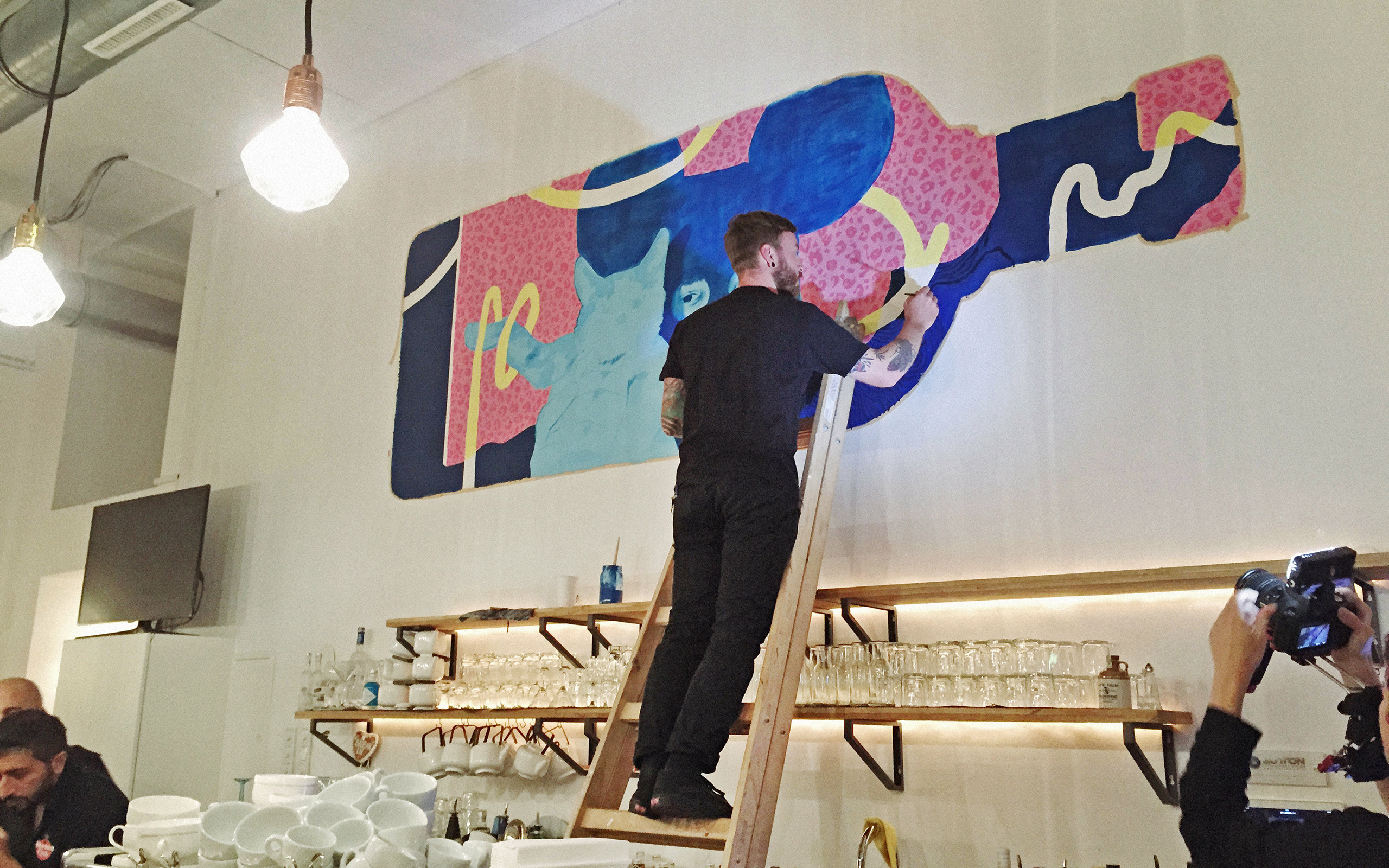
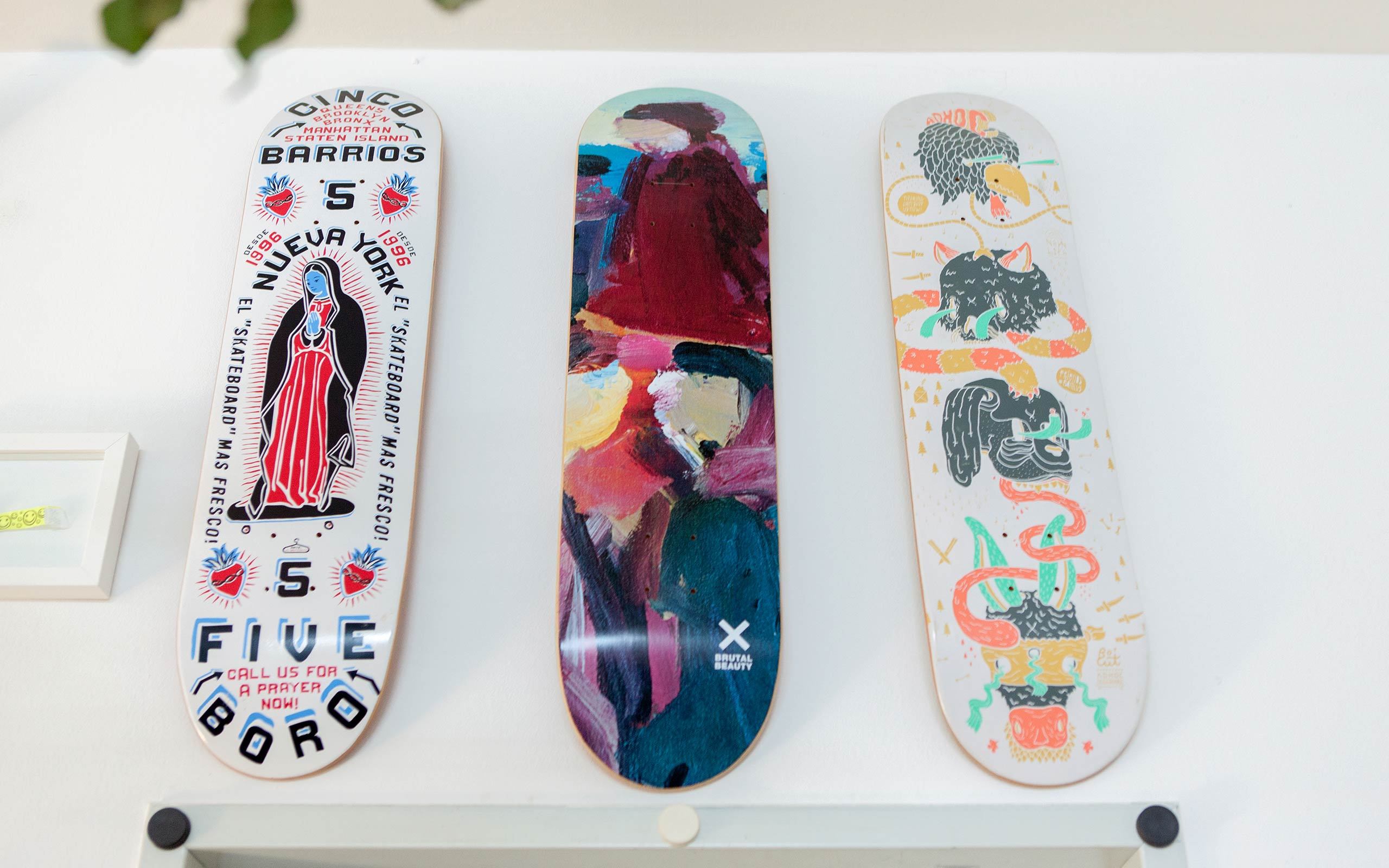
Interview: Michael Wuerges
Photos: Maximilian Pramatarov


